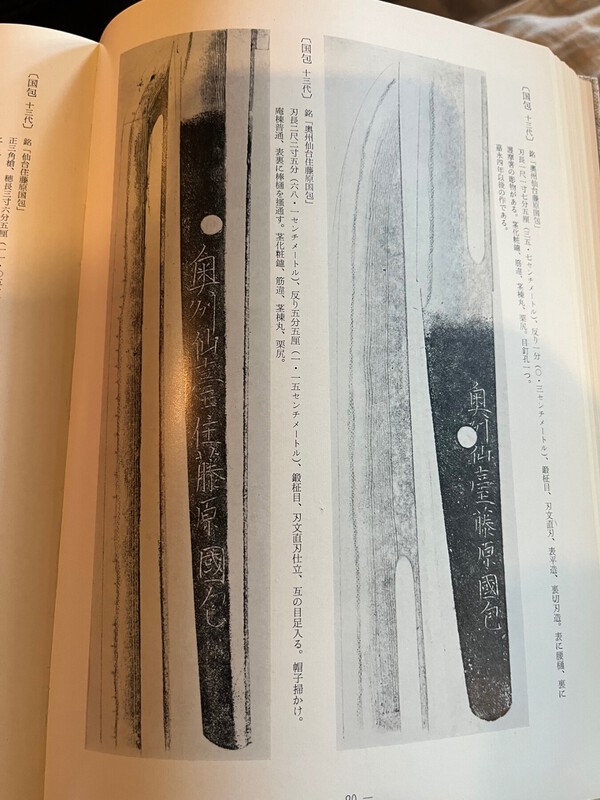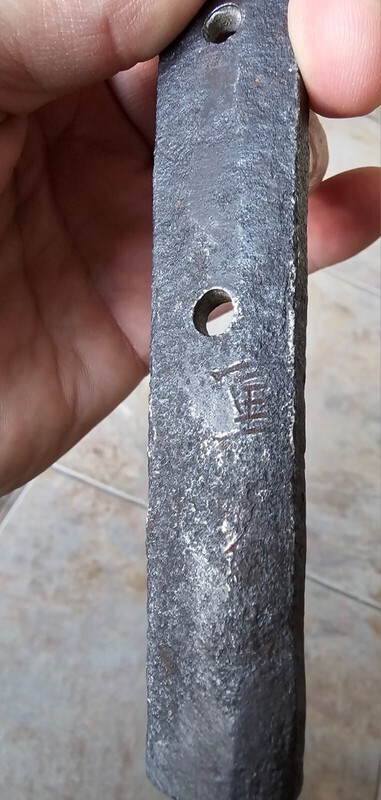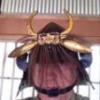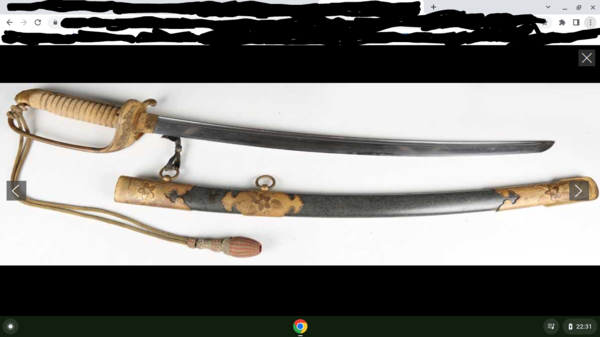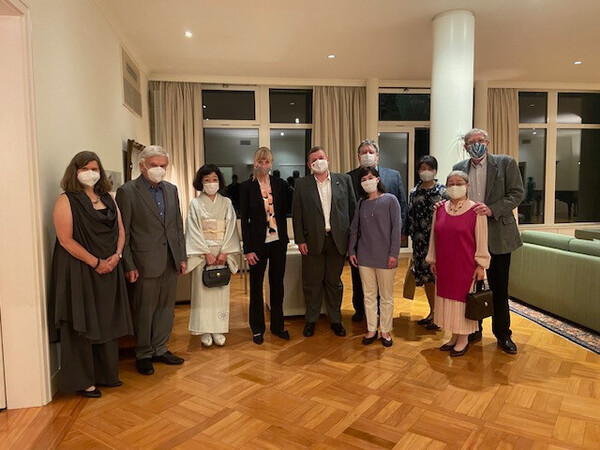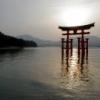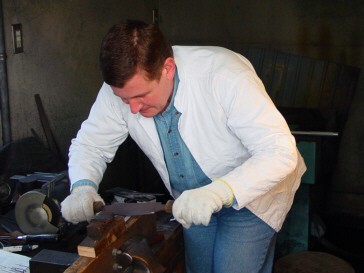Leaderboard
Popular Content
Showing content with the highest reputation on 11/21/2025 in all areas
-
4 points
-
David, it is YOSHISADA 義定: real name Ishihara Jō´ichi (石原錠一). Born Meiji 32 (1899) August 16. Registerd Seki smith . Showa 14 (1939) October 25 (age 40). Example mei: (“Seki ju Ishi hara Yoshisada saku” SHO). (“Seki ju Ishihara Yoshisada saku” SEKI). (“Yoshisada” “1942” SEKI). Noted yours has a SEKI stamp. One from Japanese sword Index: Also another : Seki ju Ishihara Yoshisada saku with SEKI stamp. This is a long blade nagasa of 75.1 cm and sori 1.5 cm so looks custom Seki work. (from Meirin Sangyo)4 points
-
3 points
-
I can’t help but agree with Colin. You definitely shouldn't do anything, especially in such an “indelicate” way. Firstly, rust removers completely “eat up” the top layer of the tsuba metal, and patina no longer forms on it. Secondly, you should not use oils like WD-40, as they are hygroscopic and contain aggressive additives. And if you remove the natural plaque around the inserts, the tsuba as a whole will look much less attractive…3 points
-
2 points
-
There is a subforum for translation assistance, so you are better to post this there. Even better, pay @SteveM or another translator to professionally translate this for you. You’ll get a better result, especially since Tanobe sensei sometimes has some nuance in his commentary.2 points
-
Checks all my boxes except the price… Looks like the saya cover was originally made for a Type 98 based on the indentations in the leather where the haiken is located.2 points
-
Thanks so much! That is definitely an interesting way of writing the 定 SADA character. The NAGASA on this one is almost exactly 2 SHAKU at 61cm. SORI is 1.7cm. Done! Also got a bad picture of the hamon. The habaki on this one is NOT coming off. It moves about 1cm and then won't go any further. Polish on the blade is "ok", but it's definitely a sword that saw some real use. At least it hasn't been buffed or uchiko powdered to death like so many other bring back swords I've seen.2 points
-
@Ronald Aguirre Ron, mei looks to be: Noshu ju nin Murayama Kanetoshi kore saku kore (inhabitant of Noshu "Mino") 濃州住人村山兼俊之作 in artistic script. As noted by Conway date is Showa 14 (1939) February lucky day. The two kanji at right of date appear to be a name (of owner) maybe Mizu (cant read) 水 X. There is more info & pics in paper of "Japanese Swordsmiths GIFU 1937" in NMB Downloads ((top of page) 兼俊 Kanetoshi (村山 喜之一 Murayama Yoshinoichi) Born: Meiji 38 (1905) August 3; Registered as a Seki smith, Showa 14 (1939) October 8. In 1937 lived at Kamo-gun, Tomita-mura, Hanyu. History: trained under father Murayama Kaneyuki (#30). Died February 23, 1978. Independent from Showa 9 (1934) with tanrenjo at Kamo-gun, Kamono-mura. Summary: also trained under Niwa Kanematsu Kanenobu 兼信. In pre-war shinsakuto exhibitions won 3 Nyusen-sho, also Kinpai (Gold medal) and Daijin-sho (Ministers Award) 1940: 5th shinsakuto exhibition submitted long tachi (nagasa 115 cm) won recommendation. 1940: in tameshigiri section by Nakayama Hakudo his sword gained good review. 1941: 6th shinsakuto exhibition 2nd seat of 5. There was a father and two sons all registered in Seki in October, 1939 MURAYAMA Kaneyuki born 1884 Murayama Kanetoshi born 1905 Murayama Kaneshige born 1909 Example below is from Slough:2 points
-
@rdarnell67 Richard, I think this mei is: Seki Zenjo Ogawa Kanekuni (関善定小川兼國) of Ogawa Sentaro Kanekuni. In NMB Downloads is a paper on his and connections:2 points
-
Kindly point out what I said that you feel like needs to be taken with a grain of salt (beyond the usual caution that anyone should exercise when dealing with poorly recorded historical events of 700 years ago). Be specific, please.2 points
-
@chino Steve, as noted by Bruce, early war and probably made by Hidetoshi but not using tamahagane iron and is oil quenched. There are examples and context in paper in NMB Downloads (top of page)2 points
-
I have this book: HIGHLY recommended for anyone with an interest in the Nobuie smiths and the context out of which they arose. This is a lavishly done publication, highly readable, with beautiful black and while life-size images of the pieces illustrated. We desperately need more scholarship on this level in our field. Superb.2 points
-
2 points
-
Hi Ambo, The first character is the katakana "SU", then 103. Fittings were marked to keep them all together, as they were custom fitted to each blade. You might even see a painted number on the blade that matches (not always). Love the see the rest of the fittings and blade. Is it signed?2 points
-
Whilst not really my thing I was quite impressed by Lot 3564 in Toovey's upcoming sale on 26th November of edged weapons,firearms,medals and militaria. There is also a heap of gunto,one 'Nagamitsu',see; https://www.tooveys.com/online-catalogue/firearms-and-edged-weapons charles1 point
-
Perfect. I do see the prominent masame lines. I have also joined the NCJSC sword club, so maybe at the next meeting they can give me more info.1 point
-
Based on your PM you're on the right track. If you do see it then you have a very cool piece. -t1 point
-
1 point
-
1 point
-
1 point
-
1 point
-
Hi Jens and Bruce, I'd be happy to move it when we get some more translated. I very frequently refer to Nick Komiya's threads and his red font translated documents. I'm going to share a couple links below, the later, on the Type95, containing most of them. If you have an interest in Military Sword of Japan, these are must reads. Type 32 : https://www.warrelics.eu/forum/Japanese-militaria/system-kaizen-behind-type-32-gunto-production-1930s-788442/#post2154241 And for the Type 95 (with a lot of these documents, some also about the Type32): https://www.warrelics.eu/forum/Japanese-militaria/short-development-history-type-95-gunto-676112/ I will follow along and move it when the time comes. All the best, -Sam1 point
-
@Scogg after the translating is complete here, how about moving this over to the military section. I think it would be of interest to the guys that collect Type 32s.1 point
-
Please see below for Ogawa Kanekuni. https://www.google.com/search?q="ogawa+kanekuni"+site%3Amilitaria.co.za&sca_esv=18637f1ce6371d1f&rlz=1C1YTUH_enUS1164US1164&sxsrf=AE3TifOV34tbjjQ9yRuvGop5ne4Ec7zGcg%3A1763671772968&ei=3H4faergOsybwbkPwdKH2A4&ved=0ahUKEwjqvpyszYGRAxXMTTABHUHpAesQ4dUDCBE&uact=5&oq="ogawa+kanekuni"+site%3Amilitaria.co.za&gs_lp=Egxnd3Mtd2l6LXNlcnAiJSJvZ2F3YSBrYW5la3VuaSIgc2l0ZTptaWxpdGFyaWEuY28uemFI1BFQ1QFYkA9wAXgAkAEAmAGMAaABuQWqAQMzLjS4AQPIAQD4AQH4AQKYAgegApYFwgIHEAAYsAMYHsICCxAAGIAEGLADGKIEwgIIEAAYsAMY7wXCAgYQABgWGB7CAggQABiABBiiBMICBRAAGO8FwgIFECEYoAHCAgUQIRirApgDAIgGAZAGBZIHAzIuNaAH2A6yBwMxLjW4B5EFwgcFMy4yLjLIBw8&sclient=gws-wiz-serp1 point
-
The smith is Murayama Kanetoshi and it’s dated a lucky day in February 1939. Do you have better pictures of the nakago? The pictures cut off part of the Mei and the other characters on the date side are not well-focused.1 point
-
Chris: Just as an aside, the term nyudo is used on swords to describe a monk or one who has joined the priesthood. John C.1 point
-
The stamp was used from 1935 to 1942, with most dated blades found from 1940-1941.1 point
-
Noshu Seki ju Kanekami saku. I would look into the late Muromachi Sue-Seki group. Best regards, Ray1 point
-
1 point
-
前伯州信高入道 – Zen (former) Hakushu Nobutaka nyudo I believe that this Nobutaka is the 2nd generation. Ref. Nobutaka - NOB488 | Nihonto Club1 point
-
@fox1 Sam your blade is early war with a SHO stamp in sakura flower, which indlicates not fully traditionally made. But looks a good item. Of note it is in "samurai" civilian mounts not Army gunto. YOSHINAO 義尚: real name Takeyama Tsutomu (武山勲) Born Meiji 39 (1906) August 17, older brother of Yoshitomi (義臣). Registered as a Seki smith in Showa 14 (1939) October 27 (age 33). Rikugun-jumei-tōshō. Died Showa 57 (1982) July 11. In Akihide 1942 ranking is Jōkō no retsu (5/7). In exhibition 6th Shinsakuto 1941 is second seat (2/5). Examples of mei: (“Seki Fujiwara Yoshinao”) (“Noshu Seki Takeyama Yoshinao saku” SHO), (“Seki Fujiwara Yoshinao saku” SHO), (“Seki Fujiwara Yoshinao saku kore”) (“Noshu ju Takeyama Yoshinao kin saku”) (“Noshu Seki ju nin Takeyama Yoshinao kin saku” SEKI).1 point
-
Here is a google translation for the regs on the left side: Translation 1. The long sword, trumpet, and cavalry equipment (excluding the sabretache) are to be carried by the cavalry. 2. Officers at government offices, schools (excluding the self-funded car school), headquarters, material depots (excluding air corps material depots and maintenance units), military police, and corporals are to carry the Type 32 Model B sword (non-commissioned officers and soldiers of the headquarters non-commissioned officer committee and air corps maintenance units are excluded from this table). 3. Chief mechanics, non-commissioned officers and soldiers of all units, and heavy artillery special duty personnel are to carry the Type 30 bayonet. 4. Non-commissioned officers and soldiers of the balloon corps are to carry the Type 30 and Type 14 weapons. 5. Students of the Army Signal School are to carry the Type 30 bayonet. 6. Students of the Army Aviation School are to carry the Type 30 bayonet. 7. Students of the Army Cadet School are to carry the branch insignia of their assigned branch. (Including acting paymasters, acting medical officers, acting veterinary officers, and acting engineering officers) Acting officers are to carry the officer's sword. 8. Students of the Army Youth School are to carry the Type 30 bayonet. 9. Students of the Army Engineering School are to carry the Type 30 bayonet. 10. Students of the Military Music School are to carry the Type 30 bayonet. 11. The Type 38 cavalry rifle is to be carried in addition to this table by the Chief of Military Police in Kyoto, Osaka, Kobe, and the high-ranking military police chiefs. John C.1 point
-
https://www.skinnerinc.com/auctions/3046T/lots/1058 Those these are all of the same general pattern, they are not identical and all show small variations. Like many of this type the tagane-ato punch marks around the nakago-ana were probably added in the workshop when manufactured, to give the impression that they had been mounted but are usually just cosmetic - some would have later been mounted but not many. https://auctions.yahoo.co.jp/jp/auction/g1197874839 https://www.jauce.com/auction/g1197874839 Auction still running. Another type that depicts the same scene are usually described as Hamano - the Hamano ones are identical and must have been mass produced but are often not finished to the same standards. I would much rather the hand finished Soten signed type! These can be expenive rubbish.1 point
-
Hello, yes this is an arsenal blade made during WW2. The inscription is 関武山義尚作 Seki Takeyama Yoshinao saku which means "Takeyama Yoshinao of Seki (city) made this".1 point
-
1 point
-
Dear Max. I did not mean to imply that your tsuba was not genuine. It is. This is not a modern casting, it is, as far as we can tell late Edo or perhaps earlier. If you look at the nanako under a magnifying glass you should see that it is quite well done compared to other examples from this group. Indeed sometimes these fetch quite good prices at auction and you quite often see them mounted on koshirae. The better ones are really quite appealing. With tsuba one needs to train the eyes and a detailed examination of your tsuba compared with say this one, should help you get started. https://nihonto.com/3-1-22/ Don't assume that you will ever finish this journey, there is far more to learn than can be encompassed in one lifetime, that is part of the delight! All the best.1 point
-
1 point
-
Dear Max. Several schools of tsuba makers used designs many times. In this case your tsuba appears to be what would be called Nagoya mono or thing made in Nagoya. These are made from an alloy different to shakudo which you will see has a brownish tinge to it. Around the nakago ana there are usually quite distinctive tagane ato or punch marks. The quality varies a great deal, some are quite well done and some are embarrassing. In general the difference between these and a good kinko are the base material and crispness of execution, Nagoya mono are to a greater or lesser extent somewhat blurred and lack precision, see the waves at the top of your tsuba as an example. The quality of nanako also varies but is generally low. Signatures such as these two have are generally to be ignored. Have a look here for more information, Hope that helps. All the best.1 point
-
Hi, Total amateur opinion here. You sword looks like late Koto Sue-Bizen Uchigatana. As for missing material on Nakago, I have a sword (pics below) with a very similar 'attribute'. My guess is that was due to uncommon-increased corrosion back in the days. Chunks were removed, cleaned and got proper patina later during the aging process.1 point
-
These are to my mind older, from a time when guns were still thought to be ‘Western’, a time of strict imitation, when artisans thought a ‘powder horn’ ought to be made from cow horn. They still retain some Western feeling, but already the artistic sensibility was at work. The ‘frilled’ edges may also pay lip service to Western clothing ruffs which were still somewhat in fashion. Later on, people felt free to create powder flasks in more Japanese iterations. The ruffs often continued however.1 point
-
1 point
-
1 point
-
If the nice fairy tale was true, I wonder why no one of these highly decorated BUDO masters was able to care properly for this sword, so that it ended in such a deplorable state!1 point
-
This topic is surely worth expanding. Looking to post a coarse powder flask I found over the weekend, I discovered this good old thread! These old black-powder flasks can show astonishingly fine work. If you can find one with matching bits (frills), then all the better! See below the collar of the spout, the top of the powder measuring cap, the heads of the pegs, and the flask side-attachment seat. Detail Pouring spout1 point
-
Steve: As a general rule, always assume gimei if not papered. But also, with a big name in particular, if papers raise the value substantially why didn't the previous owners get it papered? Or, did they try and it didn't pass? Without a thorough kantei of the blade itself, it's just guesswork. And just my personal thing, I get suspicious quickly of flowery descriptions. He's trying to sell the sword a little too hard. John C. p.s. From marketing 101 - people like to buy; they don't like to be sold.1 point
-
Hi Kevin, Great question. There is a tradition of attribution that goes back to the 17th century where respected appraisers wrote the name of the maker in gold inlay on the tang of the blade (Kinzogan). Some of the shortening were performed by this group, called the Hon'ami, and as a result they had access to many more signatures than we do today. The attribution "Go Yoshihiro" has a number of canonical traits (e.g., Ichimai boshi, first class nie, shallow sori, habuchi that increases towards the kissaki...) that have been studied since the Momoyama period. There is, of course, a substantial degree of uncertainty with attributed blades. Attributions on mumei works are best understood as "this is the most likely maker given what we know today" - and even more conservatively as a way to state that a sword expresses certain traits and a certain level of quality that is in line with reputation of a certain master smith. In this sense, there is a tradition of attribution that has been honed over generation of competent judges, based on ancient literature and oral transmission. I would advise caution on mumei Soshu blades to big names that are without Ko-Kiwame (old appraisal by the reputable judges) or established provenance from Daimyo collection with a high-level record of gift-giving. Makers during the Shinto era, such as Nanki Shigekuni or Shinkai came very close to Go, and one should always examine the sword critically. Best, Hoshi1 point
-
With a heavy heart from a recent phone call from Minako Schiller, I wish to report that Guido has taken his leave from this plane of existence! Guido was an early and a long time member of NMB! From his posts, you will recall he was not shy and well... he called a Panzer ... a Panzer! As a career diplomat, he served the German Embassy as an Attache in several Asian countries. He greatly enjoyed his two postings at the embassy in Tokyo. This was certainly his sweet spot because he was very much at home in Japan. In all our years of associating in Japan, I cannot recall a time when we didn't imbibe when meeting. any occasion was an opportunity or an excuse for a Kampai! We had no illusions of grandeur... it was either beer or nihonshu... or beer then nihonshu. We traveled a lot together domestically but only once internationally when we ventured over to Macao! Suspicious minds out there... I know what you are thinking! No, it was not to gamble! We had been invited to attend the gala events for the opening of the History of Steel in Asia Exhibition at the newly opened Macao Art Museum (MAM). Guido, Roger Robertshaw, and I were honored guests for we contributed the entire display of Japanese swords, tsuba, and armor for the three month exhibition. All our items from Japan were shipped through the Embassy diplomatic channel. Edged weapons from seven Asian countries were on display as the Chinese government made their pitch to demonstrate the historical importance of their homeland in the development of edged weapons. Guido was an avid collector! When he was stationed in New York at the United Nations, he collected some fine Civil War firearms including a nice Sharps rifle, a Henry rifle, and several cap and ball revolvers. While in Jakarta, he put together a collection of Kris blades, and in Japan he was in Nihonto heaven and he developed a netsuke collection as well. In mid 2021, during Covid, Guido was recalled to Germany to take his final posting for his remaining two years prior to retirement. To this end, the Ambassador of the Federal Republic of Germany, Her Excellency Ina Lepel sent out a limited number of invitations for the farewell dinner for Mr. and Mrs. Schiller held on May 17 at 7 p.m. at her residence. During this solemn period of emergency pandemic privation, on the day in question, my wife and I made our way to the German Embassy to determine if there really was cause for celebration and if the rumors were true. In fact, Her Excellency Ambassador Ina Lepel, had indeed made great arrangements to send Guido and Minako Schiller back to Germany. It had not been determined if this action resulted from an infraction or if it were a benevolent gesture. It was entirely possible that Attache Schiller had been doing good work and this reassignment was, in fact, a reward. Yet, was it a reward to send a man home to sausage and sauerkraut after years of eating Tokyo’s finest sashimi and raw oysters? Is it even possible to willingly give up the range of heavenly sake found in Japan? What hypnotic spell could shots of Apfelkorn or Rumpel Minze Schnapps have over the infinite variety of locally brewed sake? To this day, these questions remain unanswered… unsolved mysteries and unanswered questions to compete with Guido's speculation on the missing Masamune sword. Like a Teutonic knight, loyal to the order, Herr Schiller was indeed packaged up and moved to his ancestral home. Unfortunately, the final stage of Guido's employment was not completed. He suffered a massive stroke and fell into a coma from which he never recovered. He remained in this state until October 10th, 2025. He is now only with us in our memories of his deeds, a man who served his country well as he rose to officer level in the army and then entered diplomatic service. Of greater importance was his service to his family, to his wife Minako and his daughter Hana. Sadly, Guido never got the opportunity to play with his new granddaughter. Guido is greatly missed... by me... his drinking buddy... I mourn this loss!1 point
-
My fondest memories of him are also on the yakatabune after the DTI. That is when his real character came out. He really enjoyed a party. I also have clips of him singing and entertaining us all. Here he is with 2.5 South Africans (because Ford lived in Cape Town for a while, we claim him just a little) And on the yakatabune...I think that's Ted Tenold with him.1 point
-
Thanks for letting us know Bob and sorry for your loss, and the nihonto community’s loss. These last few years I had often thought about Guido, hoping through some miracle he might wake from his coma… not to be. Guido was someone I respected very much, he was highly intelligent, full of knowledge and insight, and willing to share it, he also had a very sharp wit and more often than not our conversations would end in belly-laughing. Many years ago, when I first set out to become a nihonto craftsman, there were very few people willing to help me, most would just dismiss me as a foolish foreigner, but not Guido. He offered to meet up with me in Tokyo, a complete stranger from the other side of the world, to discuss all things nihonto and nihon. Over the years, we corresponded quite a bit, and we would sometimes meet up at nihonto related events, where we could continue our running in-jokes with each other. He was a gentleman and a scholar... with a strong sugata!! May he rest in peace.1 point
This leaderboard is set to Johannesburg/GMT+02:00


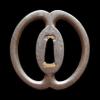





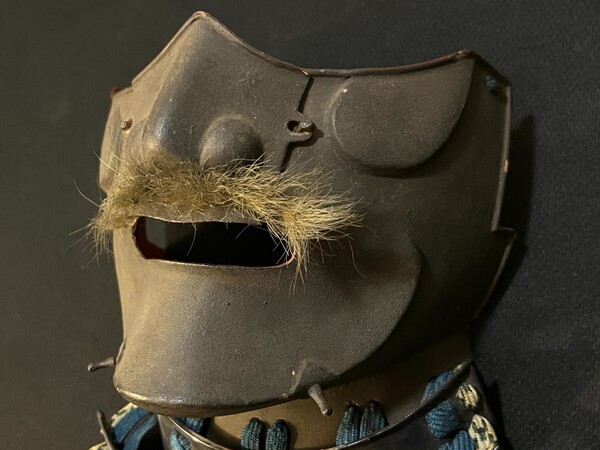



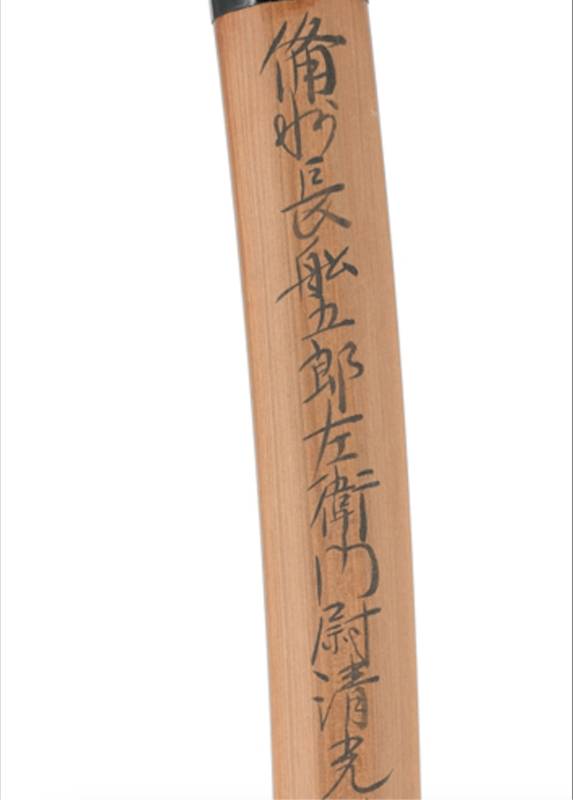
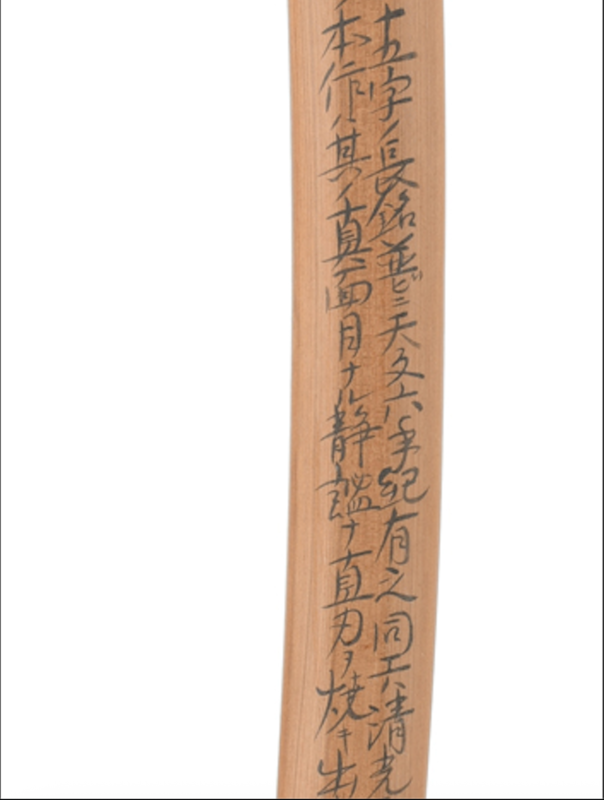
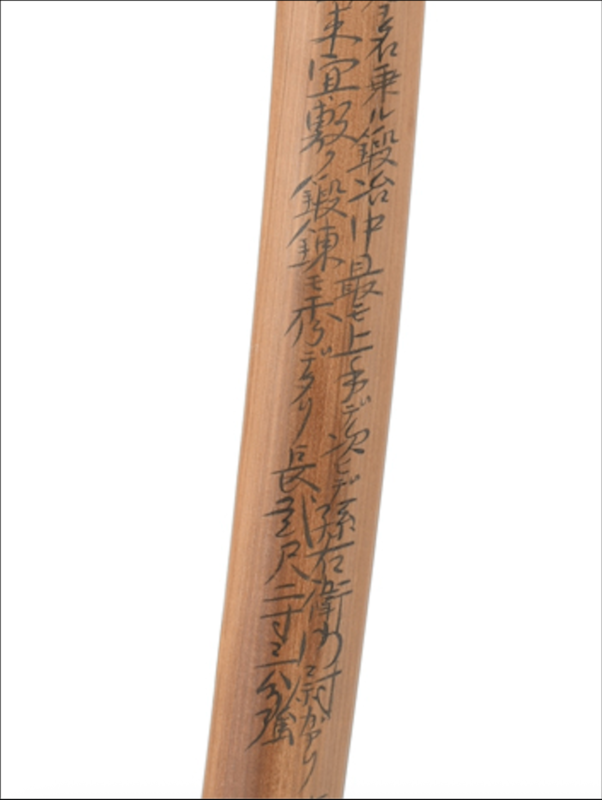




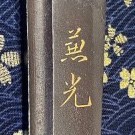


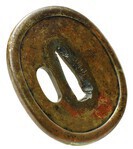
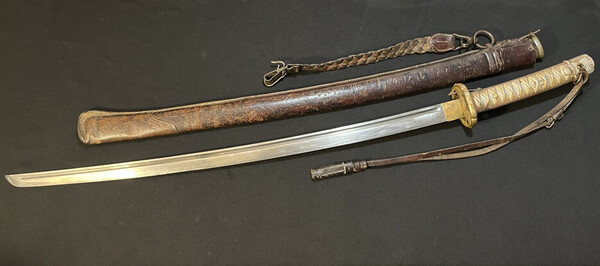


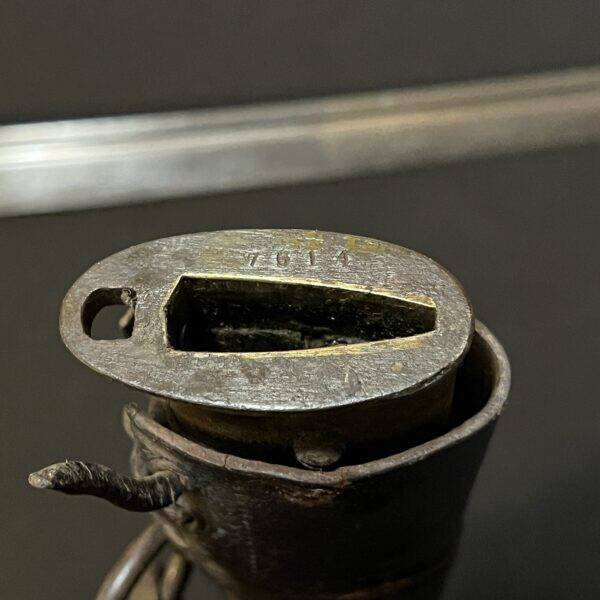

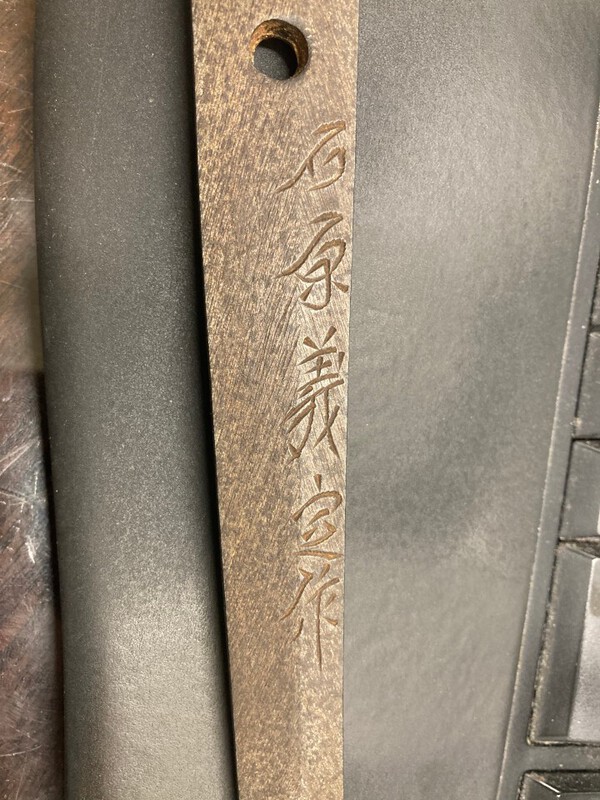

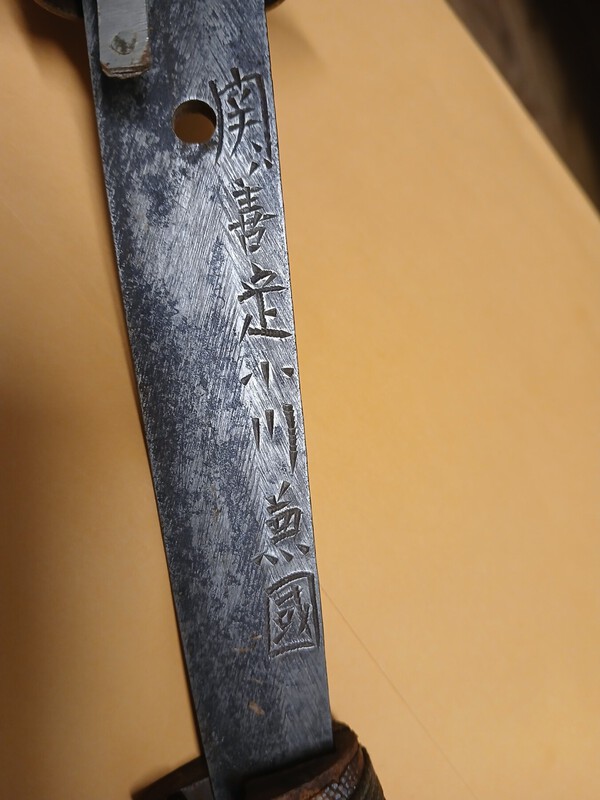


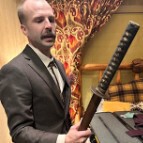

.jpg.30ab2d83eefb0b6e4124f21ac7160fe7.jpg)


